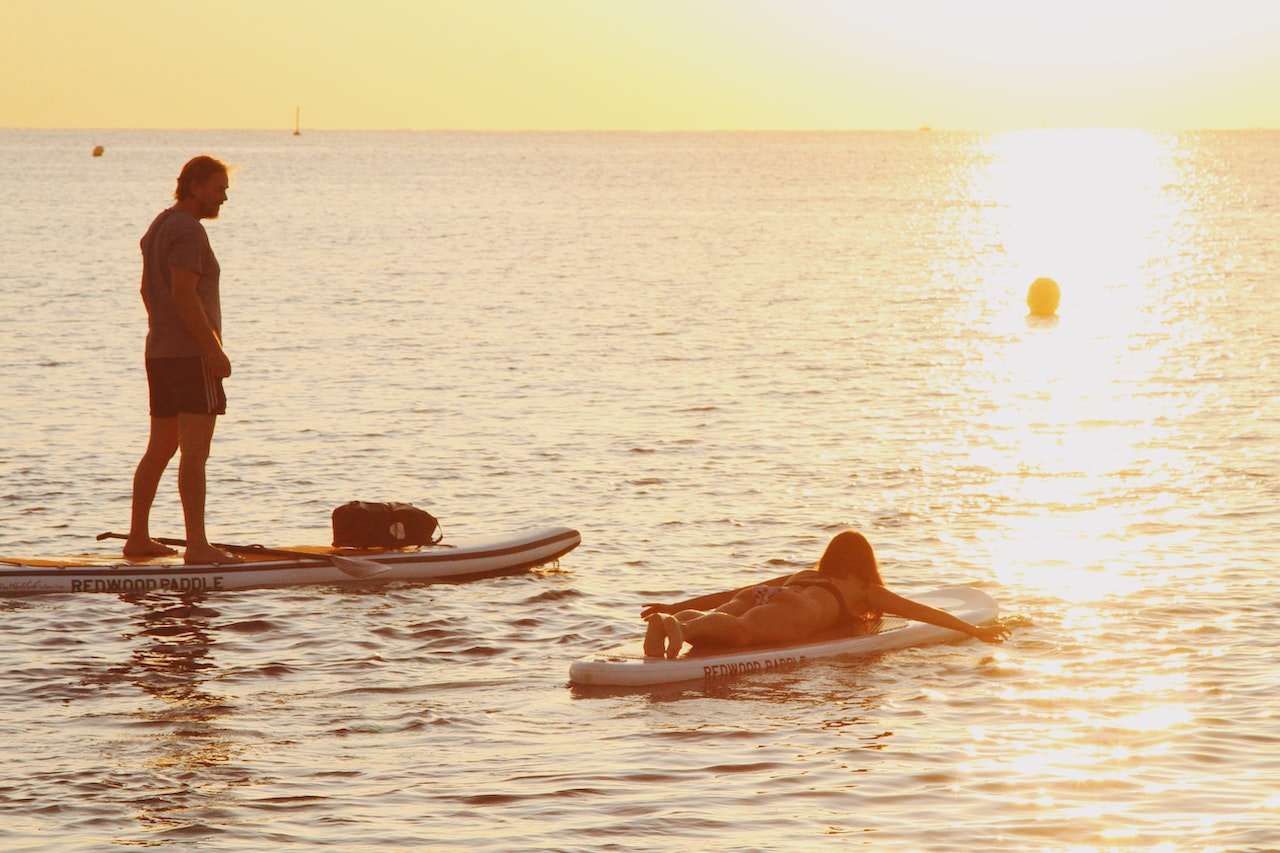Getting a paddle board gives you access to on-the-water activities that a lot of people would find inaccessible if boats were their only option. They’re cost-effective, have several specialized designs available, and are fairly easy to use; even if your balance isn’t the best.
However, there’s still one problem that comes with owning a paddleboard. How do you transport it?
Let’s face it. Trucks and trailers aren’t exactly the most popular vehicles anymore due to their tremendous refueling costs and the fact that many people are opting for eco-friendly options. That’s great, but you lose the towing ability necessary to carry large, stiff, heavy objects like small boats, and even paddleboards can be difficult to transport with most cars.
That’s where inflatable paddleboards come in. You can inflate them when you need them, or deflate them when you need to transport or store them.
Today, we’re going to go over the proper way to travel with an inflatable paddleboard so you can enjoy on-the-water activities; even if you have a small car incapable of carrying a normal paddleboard.
Let’s get started.
Proper Storage:
First, before you ever start traveling with it, you need to learn how to store your inflatable paddleboard. This is easy. Just make sure it’s fully deflated, fold it according to the manufacturer’s instructions, place it in a proper carrying bag or case, and then store the board in a sealed tote or similar container to prevent vermin or pests from damaging it in storage. This will save you any surprises when you do actually travel with it.
Storing it in the Car:
When you’re ready to go and have your trip planned out, storing the board in your car is simple. It’s best to place it, still deflated, folded, and in its protective carrier, in the trunk of your car.
However, you need to minimize the amount of risk it’s exposed to.
Try to remove any sharp or heavy objects from your truck. Even if they seem stable, a sudden stop can send those items flying into your paddleboard, and you can puncture it. Yes, even things like heavy boxes can do this if they’re so heavy they “pinch” the board against the metal of your trunk.
The issue with keeping the board stowed in the back or passenger seat is that it becomes a potential projectile in a wreck, and even though it’s a big balloon, it’s quite heavy, and it can do substantial damage when launched.
Inflating:
Once you’ve reached the spot where you want to use your board, you’ll need a portable compressor. Most of these can be plugged into your car.
Simply unpack your paddleboard, lay it down in an area by your car without sharp debris, and start inflating it. Once it has reached the recommended PSI, simply seal it and get it to the water.
Deflation and Re-Stowing:
When the day is over, you’ll have to stow your board, again. This is extremely simple if your compressor has a reverse switch. You can suck the air out of it in seconds. Then, simply re-fold it, pack it in its carrier, and stow it like you did when you left the house.



